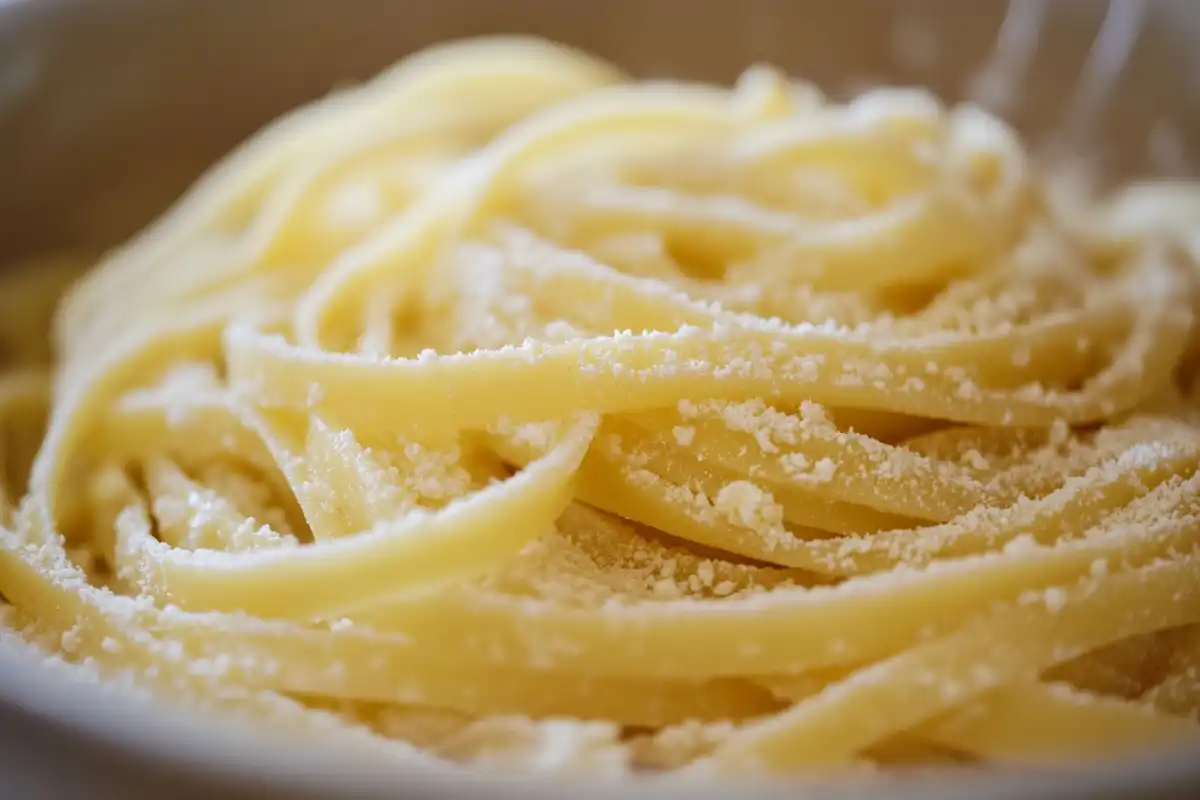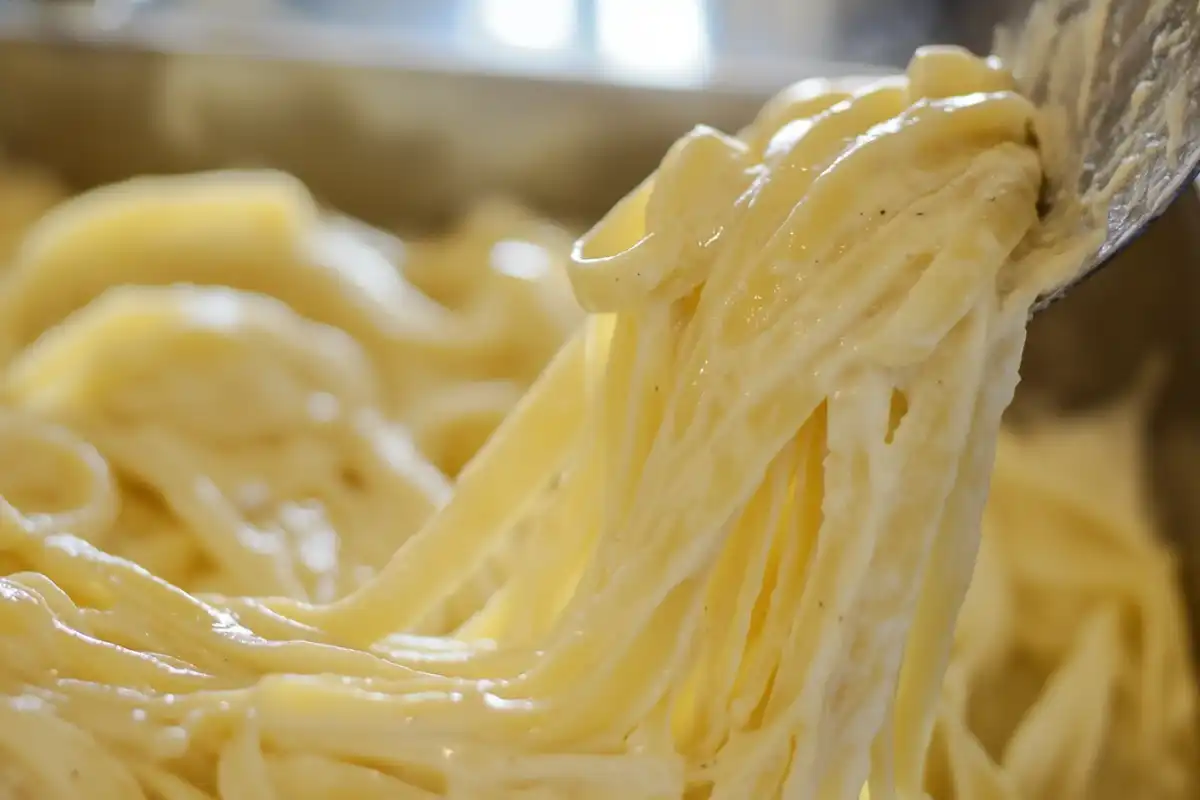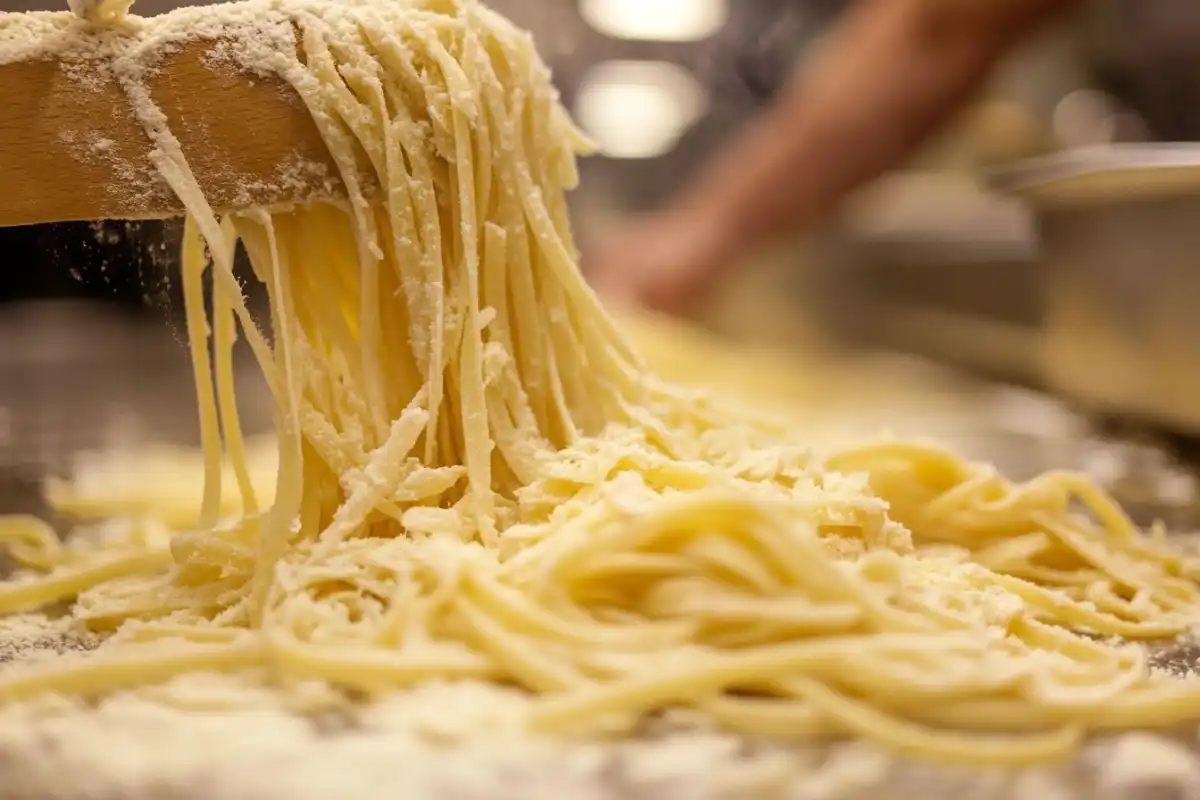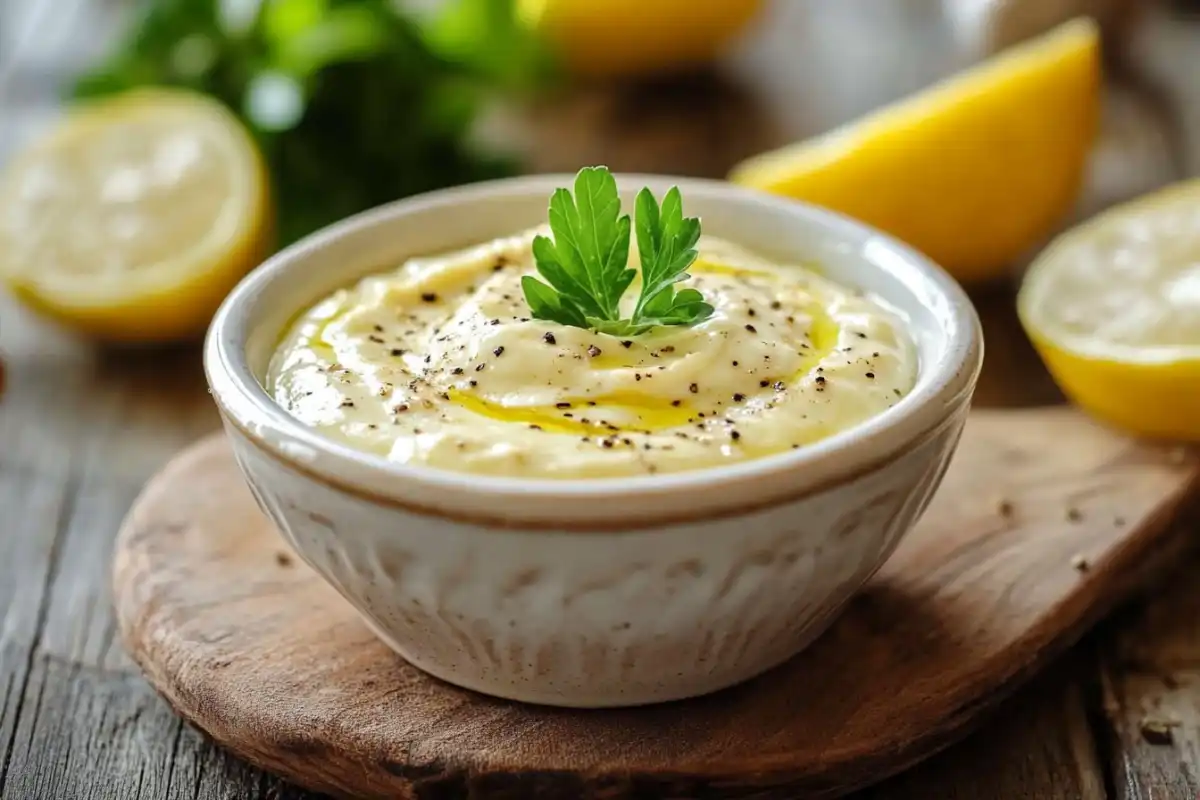Italian cuisine is known for its simplicity, high-quality ingredients, and rich flavors. One such iconic dish is Cacio e Pepe, which translates to “Cheese and Pepper” in Italian. This dish has a significant place in Italian culture, particularly in Rome, where people celebrate it for its minimal ingredients yet powerful taste.
Cacio e Pepe embodies the essence of traditional Italian cooking. It focuses on using the best quality ingredients and skillful preparation to achieve exceptional flavor. The dish has only three core ingredients: Pecorino Romano cheese, black pepper, and pasta water. Yet, it provides a complex and comforting experience. The simplicity of the dish makes it popular, as it shows how a few humble ingredients can create something extraordinary.

The versatility of Cacio e Pepe also contributes to its popularity. Whether served at a fine dining establishment or a casual family dinner, it always delivers a satisfying and comforting meal. The dish perfectly demonstrates how Italian cuisine values quality over quantity, relying on the inherent flavors of the ingredients.
History and Origin of Cacio e Pepe
The history of Roman cuisine dates back centuries, emphasizing simple yet flavorful dishes that use locally sourced ingredients. Cacio e Pepe is one of the oldest recipes in Rome. Shepherds originally crafted it, relying on easily transportable ingredients like dried pasta, aged cheese, and black pepper. These ingredients were non-perishable and provided the necessary nutrients to sustain them during long journeys.
Shepherds cooked the pasta over an open fire, using the starchy pasta water to melt the cheese and create a creamy sauce. This practical approach to cooking led to a dish that people now consider a classic of Roman cuisine.
Cacio e Pepe has deep roots in Roman tradition, making it a staple across Italy and beyond. Its cultural importance lies in its ability to deliver incredible flavor with minimal ingredients, representing the essence of Italian culinary philosophy. Although the dish has evolved over the years, its core elements remain unchanged, preserving its authenticity and connection to Roman heritage.
What is Cacio e Pepe Sauce Made Of?
The magic of Cacio e Pepe lies in its simplicity. The sauce consists of just three ingredients:
- Pecorino Romano cheese: A salty, aged sheep’s milk cheese that gives Cacio e Pepe its distinctive flavor. Learn more about Pecorino Romano cheese and its role in Italian cuisine here.
- Black pepper: Freshly ground black pepper adds warmth and a touch of spice that balances the richness of the cheese.
- Pasta water: The starchy water left after cooking the pasta is crucial for creating the creamy emulsion that binds the dish.
The simplicity of these ingredients makes Cacio e Pepe special. Each component plays a crucial role in achieving the perfect balance of flavors and textures. The cheese provides a rich, salty base, the black pepper adds a spicy kick, and the pasta water helps create a smooth, creamy sauce that coats each strand of pasta.

Key Ingredients Breakdown
Pecorino Romano
- Pecorino Romano cheese is an aged sheep’s milk cheese known for its sharp, salty flavor. It forms the backbone of Cacio e Pepe, providing both taste and texture to the sauce.
- The cheese must be finely grated to melt smoothly and combine well with the pasta water. The texture of the cheese is key to achieving the right consistency for the sauce. Larger pieces may not melt evenly, resulting in a lumpy sauce.
- Pecorino Romano has been produced in Italy for centuries and is one of the oldest cheeses in the world. Its unique flavor comes from the sheep’s milk, which has a higher fat content than cow’s milk, giving the cheese a richer and creamier texture.
Black Pepper
- Freshly ground black pepper is essential to this dish, offering a bold flavor that complements the saltiness of the cheese.
- Toasting the black pepper before adding it to the sauce enhances its aroma and taste. This step releases the essential oils in the pepper, intensifying its flavor and creating a more complex taste profile.
- The quality of the black pepper matters, as pre-ground pepper can lose its potency over time. Using freshly ground pepper ensures the dish has the vibrant, spicy kick characteristic of Cacio e Pepe.
Pasta Water
- The secret to the creamy consistency of Cacio e Pepe lies in the starchy pasta water. The starch helps emulsify the cheese and pepper, creating a smooth and velvety sauce without cream.
- The amount of pasta water used is crucial to achieving the right consistency. Too little water results in a dry sauce, while too much makes it watery. The key is to add the water gradually until reaching the desired creaminess.
- The pasta water also helps bind the cheese and pepper to the pasta, ensuring that every bite is coated in the rich, flavorful sauce.
How Cacio e Pepe Sauce is Made
To make the perfect Cacio e Pepe sauce, follow these steps:
- Boil the Pasta: Cook the pasta in salted water until al dente. Reserve a cup of the starchy pasta water. Cook the pasta just enough to maintain a firm texture, as it will continue cooking slightly when mixed with the sauce.
- Toast the Black Pepper: In a large skillet, toast freshly ground black pepper until fragrant. This step enhances the pepper’s flavor, giving the dish its signature spicy kick.
- Add Pasta Water: Pour some reserved pasta water into the skillet with the black pepper. The hot pasta water helps release the flavors of the pepper and creates the base for the sauce.
- Combine Cheese and Pasta: Add the pasta to the skillet, then gradually mix in the finely grated Pecorino Romano cheese while stirring vigorously. The key is to create an emulsion technique for sauces, ensuring the cheese melts evenly without clumping.
- Stir Continuously: Stir continuously to achieve a smooth and creamy sauce. The cheese should melt slowly, combining with the pasta water to create a velvety texture that coats the pasta evenly.
Tips for Perfecting Cacio e Pepe
- Avoid Clumping: To prevent the cheese from clumping, ensure the pasta water is not too hot when mixing it with the cheese. The heat should be enough to melt the cheese without causing it to seize up.
- Proper Grating: Use finely grated Pecorino Romano for a smoother sauce. The finer the cheese, the easier it will be to incorporate into the pasta water, creating a consistent texture.
- Timing: Prepare the sauce quickly to ensure the cheese emulsifies properly with the pasta water. Working too slowly can cause the cheese to cool and clump, resulting in a grainy sauce.
- Use the Right Tools: A large skillet and a pasta fork or tongs are ideal for mixing the pasta and sauce, allowing for even distribution of the ingredients.
Variations of Cacio e Pepe
Although people love the traditional recipe for its simplicity, some modern adaptations add unique twists. For example:
- Truffle Cacio e Pepe: Add truffle oil or shavings for an extra layer of luxury. The earthy aroma of truffle complements the rich flavors of the cheese and pepper, making it a popular variation in high-end restaurants.
- Lemon Zest: A hint of lemon zest adds brightness and balance to the dish. The citrus notes cut through the richness of the cheese, adding a refreshing element to the classic recipe.
- Garlic: Some variations include a hint of garlic, lightly sautéed before adding the pasta water. This adds an additional layer of flavor without overpowering the simplicity of the dish.
The Cacio e Pepe Experience
What Makes Cacio e Pepe Sauce Special?
The beauty of Cacio e Pepe lies in its minimalism. Unlike other pasta dishes that use a wide variety of ingredients, Cacio e Pepe focuses on the balance between Pecorino Romano cheese and black pepper. Moreover, the creamy emulsion formed by these ingredients highlights the importance of high-quality components and proper technique.
Italian cuisine often emphasizes using fewer ingredients while maximizing their natural flavors, and Cacio e Pepe is a prime example of this culinary philosophy. Therefore, the simplicity of the dish allows each ingredient to shine, creating a harmonious blend of flavors that is greater than the sum of its parts.
The creamy texture of the sauce, achieved without cream or butter, sets Cacio e Pepe apart from other pasta dishes. Additionally, the emulsion of cheese, pepper, and pasta water creates a luscious coating that clings to each strand of pasta, delivering a burst of flavor with every bite.
Cacio e Pepe in Italian Cuisine
In Italy, Cacio e Pepe is traditionally served as a primi, or first course, in a multi-course meal. Different regions may have slight variations, such as using different types of pasta, but the core ingredients remain the same. People often enjoy the dish as part of a larger meal, followed by a secondi (main course) and contorni (side dishes).
The dish is especially popular in Rome, where it is often enjoyed with tonnarelli, a thick and chewy pasta similar to spaghetti but with a square shape. The texture of tonnarelli is ideal for holding the creamy sauce, ensuring that each bite is rich and flavorful.
Cacio e Pepe is also a popular choice for casual gatherings and family dinners, as it is quick and easy to prepare. Its simplicity and bold flavors make it a favorite among both home cooks and professional chefs.

Pairing Cacio e Pepe with Other Foods
- Best Pasta Types: The ideal pastas for Cacio e Pepe are tonnarelli, spaghetti, or bucatini. These pasta shapes hold the creamy sauce well, ensuring each bite is flavorful. Furthermore, the thickness of these pastas allows them to stand up to the bold flavors of the sauce, creating a balanced dish.
- Complementary Dishes: Cacio e Pepe pairs well with light sides, such as roasted vegetables or a simple green salad, which helps balance the richness of the sauce. Grilled asparagus, roasted cherry tomatoes, or a fresh arugula salad with lemon vinaigrette are all excellent choices.
- Wine Pairing: A crisp white wine, such as a Pinot Grigio or Sauvignon Blanc, complements the flavors of Cacio e Pepe without overpowering them. Additionally, the acidity of the wine helps cut through the richness of the cheese, creating a well-rounded dining experience.
Common Mistakes When Making Cacio e Pepe
- Overheating the Cheese: Adding cheese to very hot pasta water can cause it to clump instead of emulsify. To avoid this, let the pasta cool slightly before adding the cheese. The goal is to melt the cheese gently, allowing it to combine smoothly with the pasta water.
- Incorrect Pasta Water Ratio: Using too much or too little pasta water can impact the consistency of the sauce. Therefore, add the water gradually until reaching the desired creaminess. The starch in the pasta water helps bind the sauce, so finding the right balance is key.
- Skipping the Toasting Step: Toasting the black pepper is an essential step. It enhances the flavor of the pepper, adding depth and complexity to the dish.
- Using Pre-Grated Cheese: Pre-grated cheese often contains additives that prevent clumping, which can interfere with the emulsification process. For the best results, grate the Pecorino Romano fresh before making the sauce.
FAQs – People Also Ask
- What is the difference between Alfredo and Cacio e Pepe? Cacio e Pepe uses only cheese and pepper, while Alfredo typically includes butter and cream. Alfredo sauce is richer and creamier, while Cacio e Pepe relies on the sharpness of Pecorino Romano and the spiciness of black pepper for its flavor.
- Can you use Parmesan instead of Pecorino Romano? While possible, Parmesan lacks the sharpness of Pecorino Romano, altering the flavor profile. Pecorino Romano has a more intense, salty flavor essential to the dish, whereas Parmesan is milder and less salty.
- Is Cacio e Pepe healthy? The dish is relatively high in fat and salt due to the cheese but can be enjoyed in moderation as part of a balanced diet. Using whole-grain pasta and serving it with a side of vegetables can make it a more nutritious meal.
- How do you prevent the cheese from clumping in Cacio e Pepe? Use finely grated cheese and add it gradually to warm (not hot) pasta water. Stir continuously to ensure the cheese melts evenly and forms a smooth emulsion.
Conclusion
Cacio e Pepe is a quintessential Italian dish that celebrates simplicity, quality, and technique. With just three ingredients, this dish delivers incredible flavor and a rich, creamy texture that embodies the essence of Italian cuisine. Therefore, the key to making the perfect Cacio e Pepe lies in the quality of the ingredients and the technique used to combine them.
The dish reminds us that great cooking doesn’t have to be complicated. By focusing on the basics and mastering the art of emulsification, anyone can create a restaurant-quality dish in the comfort of their own kitchen. Cacio e Pepe is more than just a recipe; it is a testament to the power of simplicity and the beauty of traditional Italian cooking.
Try making Cacio e Pepe at home and experience the magic of this timeless recipe. Whether you’re cooking for yourself, your family, or friends, this dish is sure to impress with its bold flavors and comforting texture. Embrace the simplicity, and let the quality of the ingredients shine through in every bite.
